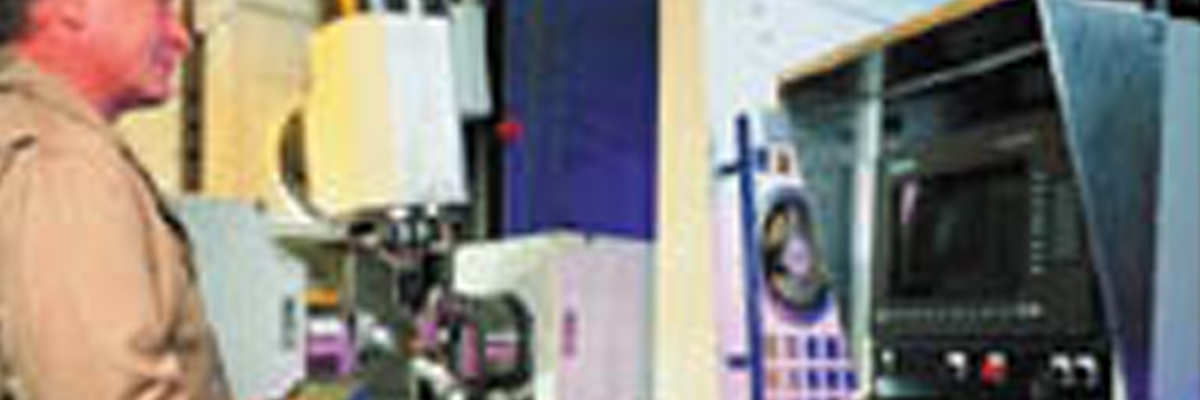VERICUT Helps German Manufacturer Improve Accuracy & Increase Efficiency
Generating tool paths for turbine blades can be one of the more complex tasks for NC programmers. With as many as 40,000 lines of code required to mill the blade surfaces to the exact tolerances required, programming and proving-out the data can be a daunting task. Alstom Power Stromerzeugung GmbH recently decided to change its machining strategy for manufacturing turbine blades in order to improve its part accuracy. In business since 1900, the Nuremberg company makes blades for steam and gas turbines. Together, Alstom Power Stromerzeugungs and its sister company, ABB Alstom Power, employ more than 50,000 people worldwide.
Alstom switched from multi-spindle to single-spindle machining and invested in five modern HURON machining centers that are networked together and controlled by a Sinumerik-840D. “The machining process with one spindle is easier than with multiple spindles,” explains engineer Rainer Pfeufer. “And we’re doing short runs, so the production of small quantities is more effective with one spindle.” Changing machining strategies also presented an opportunity to improve the NC programming process. Part of that change was looking into a new NC verification solution. Engineers at Alstom use CATIA for design. All CAM functionality, measurement, and quality control are handled by internally developed software. After selecting VERICUT for third-party verification, each NC programmer attended two days of basic training where they experienced first-hand the type of results they could expect to achieve. “That provided quite a bit of motivation for working further with the system,” says Pfeufer.
Blade production remained in full swing during VERICUT’s implementation into Alstom’s manufacturing environment. The results were almost immediate. Previously the programmer was required to check the program to the best of his knowledge, then test on the machine, correct, and re-test. Now they found they could decrease the time necessary for preparing a production-ready NC program. “Depending on the machining task, we can reduce the part programming time by five to ten percent,” says Pfeufer, “a considerable productivity gain.” Additionally, safety is increased as potential collisions between tool, fixture, work piece and machine components are recognized in advance.
Software simulation has also helped improve the quality of their NC programs, says Pfeufer. “With simulation, you can determine the best processing strategies. Several alternatives can be compared in an acceptable time frame – this was not possible in the past.”
But the real productivity gain was evident on the shop floor. Because programs are quickly and easily tested on the computer, Alstom was able to dramatically reduce the prove-out cycle. “Setting-up jobs is now much faster than before – we need just half the time. The programs can be very easily tested with VERICUT. Unnecessary motions are found quickly so they can be avoided.”
They also gained productivity during production machining. In the past, NC programmers did their best to achieve good feed rates based on their experience. But with between 20,000 to 40,000 lines of code per NC program it was just not practical. “Now with the software, the feed rates are selected automatically and the cutting conditions are calculated depending on the actual geometry.” According to Pfeufer, they are now saving 10% on their overall machining time as a result of the improved feed rates. “Also, the programmer’s time can be much better spent,” he says.
Because of their success with the product, the entire department has embraced the software and it has become an indispensable part of the department’s programming tools. “The real evidence of that,” says Pfeufer, “was when one of my colleagues, Horst Sauer, said to me, ‘Now I couldn’t live without it!’”
 Germany
Germany Italy
Italy USA
USA South Korea
South Korea UK
UK India
India France
France China
China Japan
Japan
